Cephalosporins Drugs
Cephalosporins refer to a class of antibiotics using the natural cephalosporin C secreted by the cephalosporin coronary culture as raw materials. It is manufactured through semi-synthetic modification of the side chain of cephalosporin C, also belonging to β-lactam antibiotics. It is a family of broad-spectrum semi-synthetic bactericidal antibiotics. According to their different ages and different antimicrobial activity, they can be divided into first, second, third generations, including cephalosporin Ⅰ-Ⅷ, cefathiamidine, cefamandole, cefadroxil, ceftizoxime and cephamycin derivatives and moxalactam.
Antimicrobial spectrum
(1) First generation cephalosporins mainly have effects on β-hemolytic streptococci and other streptococci, staphylococci (including enzyme production strains), Haemophilus influenzae, Escherichia coli, Klebsiella, Salmonella and Shigella bacteria. This class of antibiotics has relative weak resistance against the β-lactamase produced by the gram-negative bacteria. Therefore it is easier for Gram-negative bacteria to develop resistance.
(2) Second-generation cephalosporins have comparable or slightly lower antimicrobial activity against gram-positive bacteria compared to the first generation of antimicrobial activity similar to or slightly lower than the first generation, while having excellent effects in inhibiting the Gram-negative bacteria, as follows:
① Strong anti-enzyme capability: some Gram-negative bacteria (such as E. coli) are easy to become resistant against the first-generation cephalosporin with the second generation often being effective;
② Broad antimicrobial spectrum, the second generation has a broader antimicrobial spectrum against the first generation antibacterial spectrum with certain antibacterial activity against Neisseria, a part of indole-positive Proteus, Citrobacter and Enterobacteriaceae.
(3) The effectiveness of third-generation cephalosporins in killing gram-positive bacteria are generally lower than the first generation while their effect against gram-negative bacteria is better than the second generation. The third generation cephalosporin has broader antibacterial spectrum and stronger resistance to the enzyme.
Toxic side effect
(1) Allergic reaction: it can cause skin rashes, asthma, angioedema, anaphylactic shock and so on. The anaphylactic shock of cephalosporins is similar to penicillin. These two types of drugs have varying degrees of cross-allergic reactions. In general, 10% to 30% of those who are allergic to penicillin are also allergic to the cephalosporin while the vast majority of cephalosporin-sensitive patients are also allergic to penicillin.
(2) Gastrointestinal reactions and dysbacteriosis: cephalosporins can cause nausea, vomiting, loss of appetite and other reactions. Second-generation and third-generation cephalosporins can strongly inhibit the intestinal flora, being able to lead to dysbacteriosis, even superinfection in severe cases.
(3) Liver toxicity: Most kinds of cephalosporins, when used in large dose, can cause elevated level of transaminase, alkaline phosphatase, bilirubin, and so on.
(4) Renal toxicity: Most kinds of cephalosporins can be excreted by the kidneys, and even can lead to elevated blood urea nitrogen level, oliguria and proteinuria. Its combination with furosemide and aminoglycoside antibiotics will lead to increased kidney damage.
(5) Coagulation disorders: cephalosporins can inhibit the intestinal flora to produce vitamin K, and therefore can potentially cause bleeding effect.
- Structure:
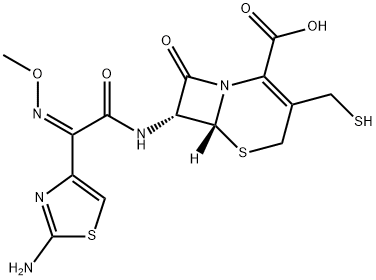
- Chemical Name:Desfuroyl Ceftiofur
- CAS:120882-22-6
- MF:C14H15N5O5S3
- Structure:
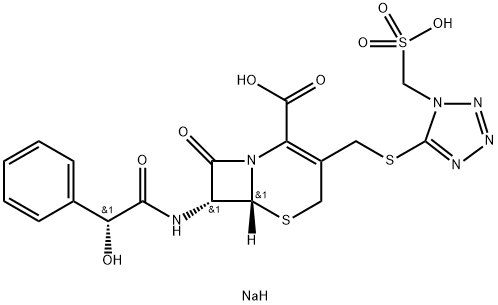
- Chemical Name:Cefonicid sodium
- CAS:61270-78-8
- MF:C18H19N6NaO8S3
- Structure:
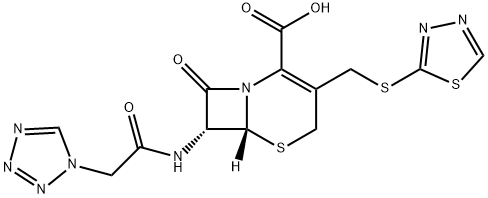
- Chemical Name:Ceftezole
- CAS:26973-24-0
- MF:C13H12N8O4S3
- Structure:
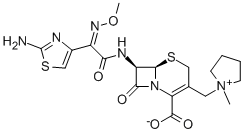
- Chemical Name:Cefepime
- CAS:88040-23-7
- MF:C19H24N6O5S2
- Structure:
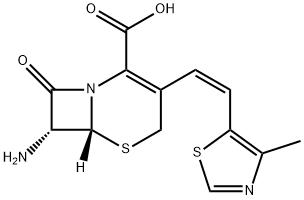
- Chemical Name:7-ATCA
- CAS:155723-02-7
- MF:C13H13N3O3S2
- Structure:
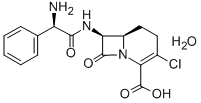
- Chemical Name:LORACARBEF (200 MG)
- CAS:121961-22-6
- MF:C16H16ClN3O4.H2O
- Structure:
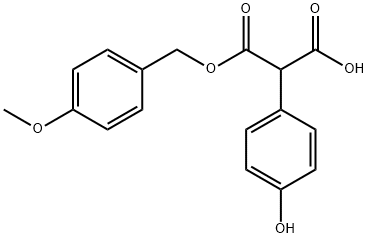
- Chemical Name:[(4-methoxyphenyl)methyl] hydrogen (4-hydroxyphenyl)malonate
- CAS:78641-40-4
- MF:C17H16O6
- Structure:

- Chemical Name:Cefacetrile sodium
- CAS:23239-41-0
- MF:C13H12N3NaO6S
- Structure:
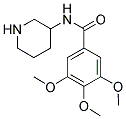
- Chemical Name:TROXIPIDE
- CAS:99777-81-8
- MF:C15H22N2O4
- Structure:
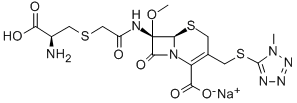
- Chemical Name:Cefminox
- CAS:75481-73-1
- MF:C16H21N7O7S3
- Structure:
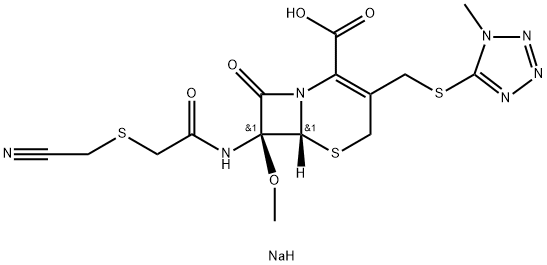
- Chemical Name:Cefmetazole sodium
- CAS:56796-39-5
- MF:C15H18N7NaO5S3
- Structure:
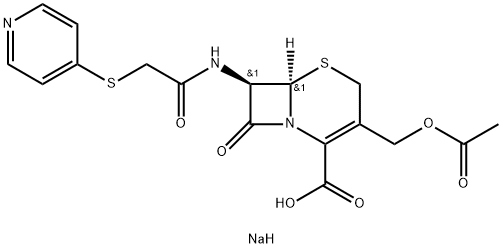
- Chemical Name:Cefapirin sodium
- CAS:24356-60-3
- MF:C17H18N3NaO6S2
- Chemical Name:CefodiziMe acid
- CAS:
- MF:
- Structure:
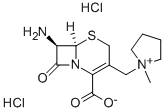
- Chemical Name:(R,R)-7-AMINO-3-(1-METHYLPYRROLIDINIO)METHYL-3-CEPHEM-4-CARBOXYLATE HCL
- CAS:780810-20-0
- MF:C13H19N3O3S.2ClH
- Structure:
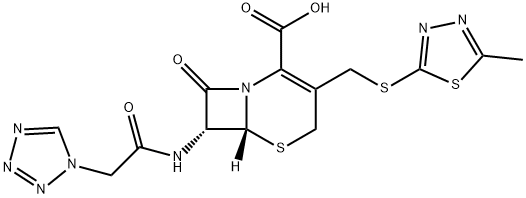
- Chemical Name:Cefazolin
- CAS:25953-19-9
- MF:C14H14N8O4S3
- Structure:
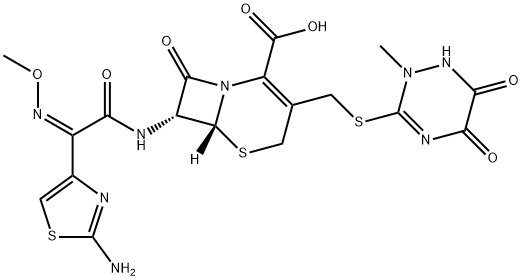
- Chemical Name:CEFTRIAXONE
- CAS:73384-59-5
- MF:C18H18N8O7S3
- Structure:
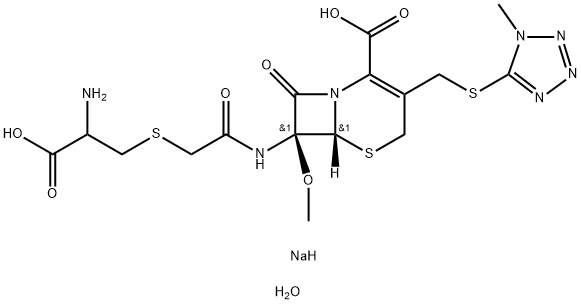
- Chemical Name:CEFMINOX SODIUM
- CAS:92636-39-0
- MF:C16H24N7NaO8S3
- Structure:
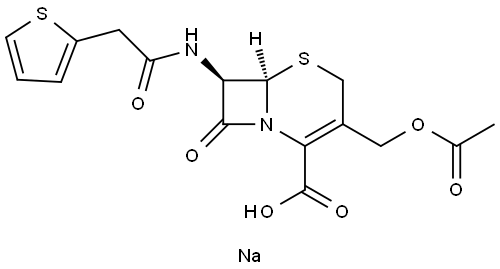
- Chemical Name:Cephalothin sodium
- CAS:58-71-9
- MF:C16H16N2O6S2.Na
- Chemical Name:Cefluprenam
- CAS:
- MF:
- Chemical Name:Potassium1,2,3-thiadiazoles-5-mercaptan thiolate
- CAS:
- MF:
- Structure:
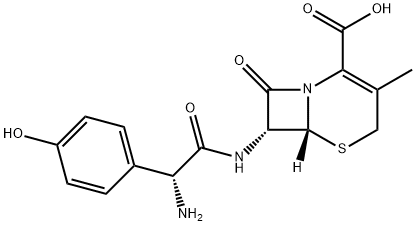
- Chemical Name:CEFADROXIL
- CAS:50370-12-2
- MF:C16H17N3O5S
- Structure:
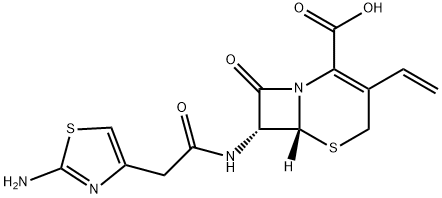
- Chemical Name:(6R-trans)-7-[[(2-AMino-4-thiazolyl)acetyl]aMino]-3-ethenyl-8-oxo-5-thia-1-azabicyclo[4.2.0]oct-2-ene-2-carboxylic Acid
- CAS:79350-10-0
- MF:C14H14N4O4S2
- Structure:
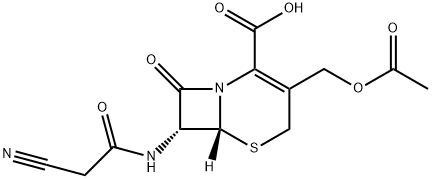
- Chemical Name:cefacetrile
- CAS:10206-21-0
- MF:C13H13N3O6S
- Chemical Name:Cefclidin
- CAS:
- MF:
- Chemical Name:5-FORMAMIDE-1-(2-FORMYLOXYETHYL)PYRAZOLE
- CAS:
- MF:C7H9N3O3
- Structure:
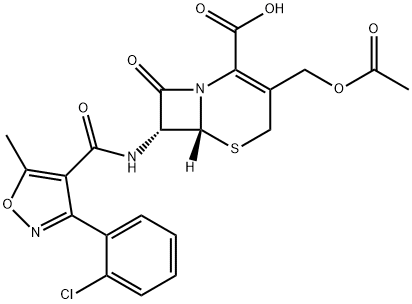
- Chemical Name:cefoxazole
- CAS:36920-48-6
- MF:C21H18ClN3O7S
- Structure:
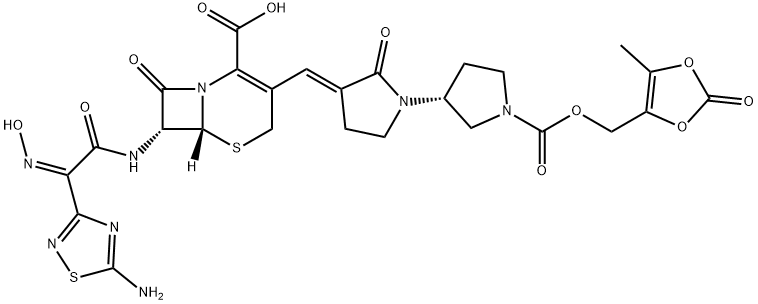
- Chemical Name:Ceftobiprole medocaril
- CAS:376653-43-9
- MF:C26H26N8O11S2
- Structure:
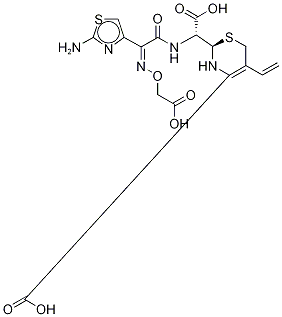
- Chemical Name:α-[[(Z)-2-(2-aMino-4-thiazolyl)-2-[(carboxyMethoxy)iMino]acetyl]aMino]-2-[(2R)-5-Methyl-7-oxo-1,2,5,7-tetrahydro-4H-furo[3,4-d][1,3]thiazin-2-yl]acetic Acid
- CAS:1335475-08-5
- MF:C16H17N5O8S2
- Structure:
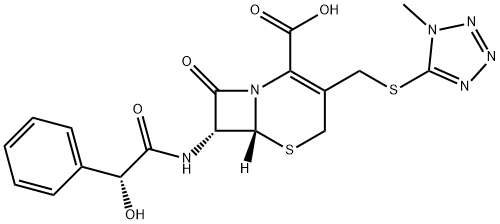
- Chemical Name:Cefamandole
- CAS:34444-01-4
- MF:C18H18N6O5S2
- Structure:
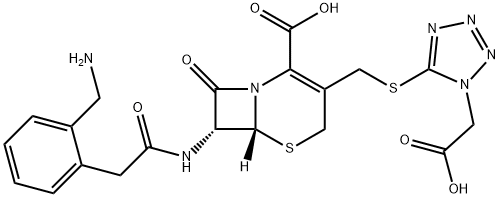
- Chemical Name:Ceforanide
- CAS:60925-61-3
- MF:C20H21N7O6S2
- Structure:
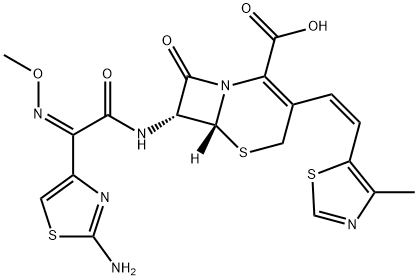
- Chemical Name:Cefditoren
- CAS:104145-95-1
- MF:C19H18N6O5S3
- Structure:
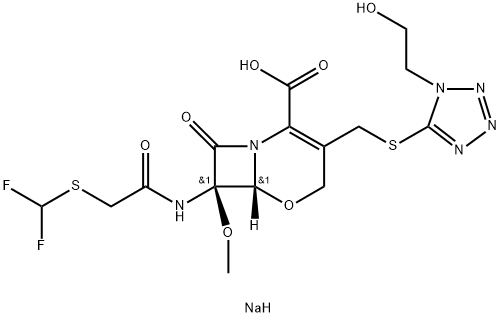
- Chemical Name:Flomoxef sodium
- CAS:92823-03-5
- MF:C15H19F2N6NaO7S2
- Chemical Name:Ceftetram
- CAS:
- MF:
- Structure:
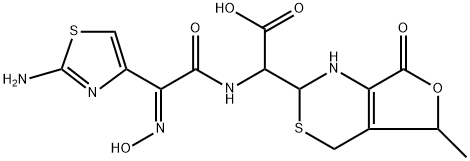
- Chemical Name:Cefdinir Related Compound A (10 mg) (2(R)-2-[(Z)-2-(2-aminothiazol-4-yl)-2-(hydroxyimino)acetamido]-2-[(2RS,5RS)-5-methyl-7-oxo-2,4,5,7-tetrahydro-1Hfuro[3,4-d][1,3]thiazin-2-yl]acetic acid)
- CAS:178422-42-9
- MF:C14H15N5O6S2
- Structure:
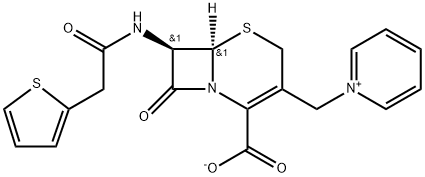
- Chemical Name:Cephaloridine
- CAS:50-59-9
- MF:C19H17N3O4S2
- Structure:

- Chemical Name:Cordycepin powder
- CAS:
- MF:C10H13N5O3
- Structure:
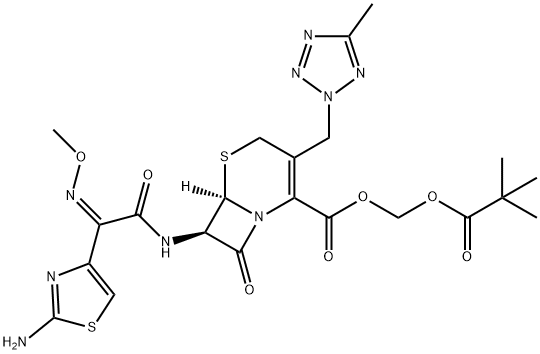
- Chemical Name:Cefteram pivoxil
- CAS:82547-81-7
- MF:C22H27N9O7S2
- Structure:
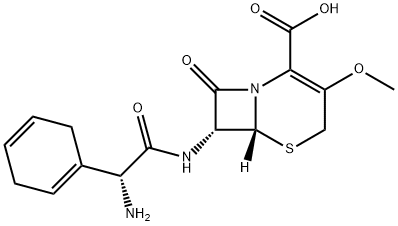
- Chemical Name:Cefroxadine
- CAS:51762-05-1
- MF:C16H19N3O5S
- Structure:
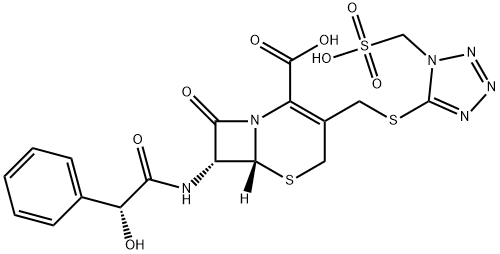
- Chemical Name:Cefonicid
- CAS:61270-58-4
- MF:C18H18N6O8S3
- Chemical Name:Cefadroxil Capsule
- CAS:
- MF:
- Chemical Name:7-AMCA
- CAS:
- MF:
- Structure:
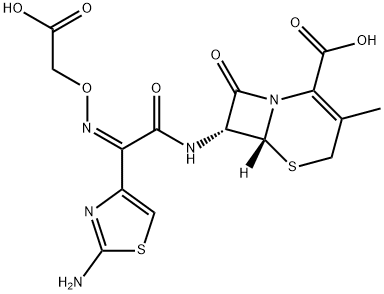
- Chemical Name:(6R,7R)-7-[[(2Z)-2-(2-AMino-4-thiazolyl)-2-[(carboxyMethoxy)iMino]acetyl]aMino]-3-Methyl-8-oxo-5-thia-1-azabicyclo[4.2.0]oct-2-ene-2-carboxylic Acid
- CAS:72701-01-0
- MF:C15H15N5O7S2
- Structure:

- Chemical Name:Cefbuperazone
- CAS:76610-84-9
- MF:C22H29N9O9S2
- Structure:
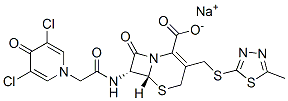
- Chemical Name:Cefazedone sodium salt
- CAS:63521-15-3
- MF:C18H14Cl2N5NaO5S3
- Structure:
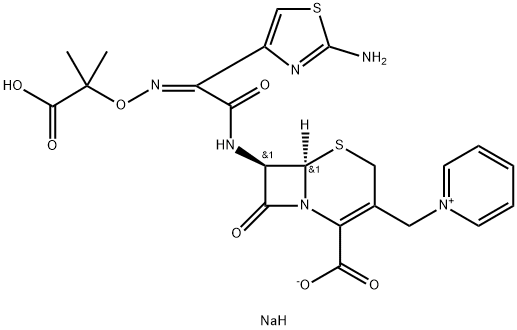
- Chemical Name:Ceftazidime sodium
- CAS:73547-61-2
- MF:C22H23N6NaO7S2
- Structure:
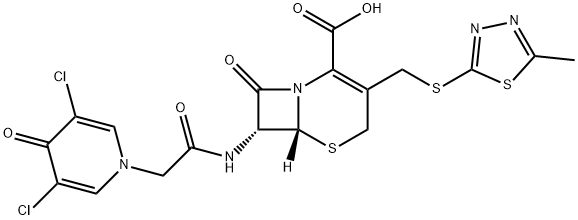
- Chemical Name:Cefazedone
- CAS:56187-47-4
- MF:C18H15Cl2N5O5S3
- Chemical Name:2-(-amino-4-thiazole)-2-(terbutoxy isopropoxyimine) thiobenzothiazole ester
- CAS:
- MF:
- Structure:
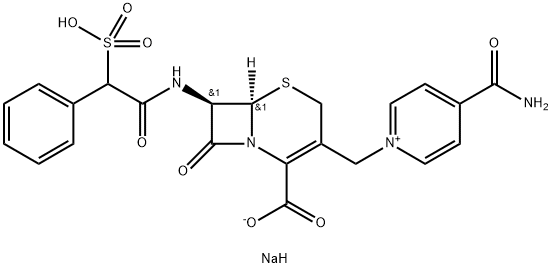
- Chemical Name:cefsulodin sodium
- CAS:41444-66-0
- MF:C22H21N4NaO8S2
- Structure:
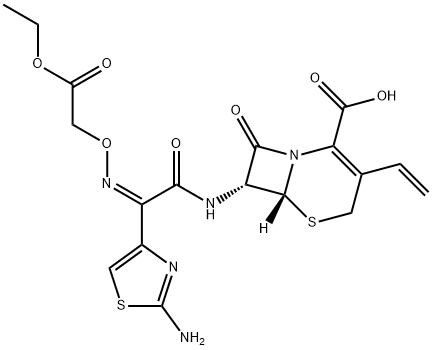
- Chemical Name:(6R,7R)-7-[[(2Z)-2-(2-AMino-4-thiazolyl)-2-[(2-ethoxy-2-oxoethoxy)iMino]acetyl]aMino]-3-ethenyl-8-oxo-5-thia-1-azabicyclo[4.2.0]oct-2-ene-2-carboxylic Acid
- CAS:79368-95-9
- MF:C18H19N5O7S2
- Structure:
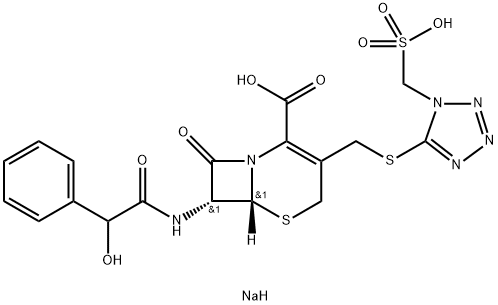
- Chemical Name:Cefonicid Disodium Salt
- CAS:190181-58-9
- MF:C18H19N6NaO8S3
- Structure:
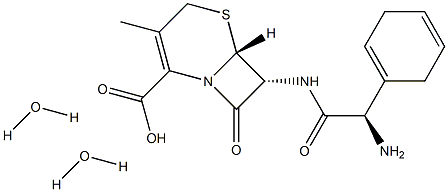
- Chemical Name:Cephradine hydrate
- CAS:31828-50-9
- MF:C16H23N3O6S
- Structure:
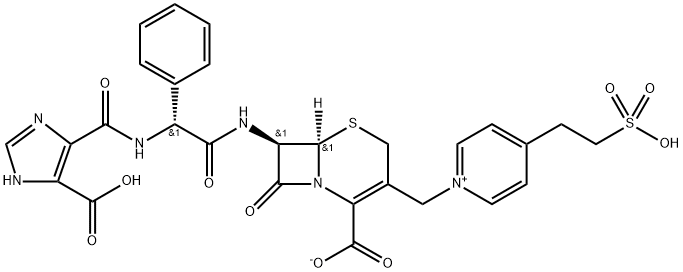
- Chemical Name:Cefpimizole
- CAS:84880-03-5
- MF:C28H26N6O10S2
- Structure:
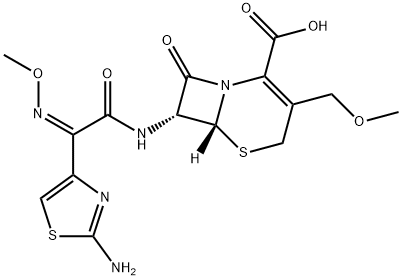
- Chemical Name:Cefpodoxime
- CAS:80210-62-4
- MF:C15H17N5O6S2
- Structure:
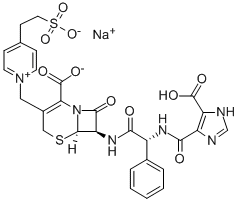
- Chemical Name:Cefpimizole sodium
- CAS:85287-61-2
- MF:C28H25N6NaO10S2
- Chemical Name:CEFAPIRIN
- CAS:
- MF:
- Chemical Name:CEFALORIDINE (ALPHA FORM)
- CAS:
- MF:
- Structure:
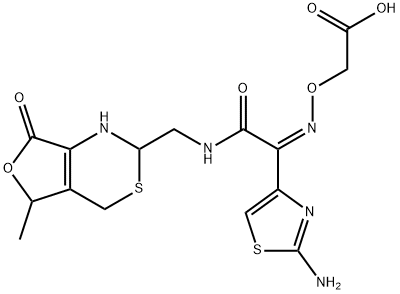
- Chemical Name:2-[[(Z)-[1-(2-aMino-4-thiazolyl)-2-[[[(2R,5RS)-5-Methyl-7-oxo-1,2,5,7-tetrahydro-4H-furo[3,4-d][1,3]thiazin-2-yl]Methyl]aMino]-2-oxoethylidene]aMino]oxy]acetic Acid
- CAS:1335475-19-8
- MF:C15H17N5O6S2
- Structure:
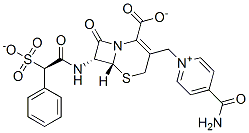
- Chemical Name:Cefsulodin
- CAS:62587-73-9
- MF:C22H20N4O8S2
- Chemical Name:CEFTRIAXONE IMPURITY A
- CAS:
- MF:
- Structure:
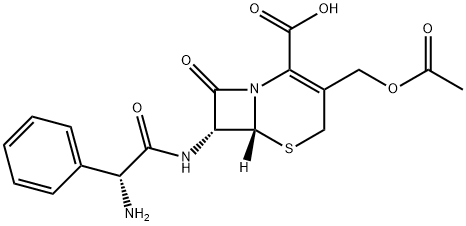
- Chemical Name:cefaloglycin
- CAS:3577-01-3
- MF:C18H19N3O6S
- Structure:
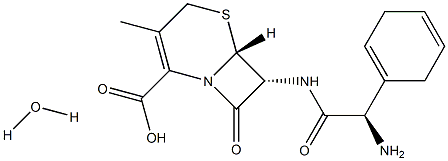
- Chemical Name:Cephradine monohydrate
- CAS:75975-70-1
- MF:C16H21N3O5S
- Chemical Name:Cefazaflur
- CAS:
- MF: